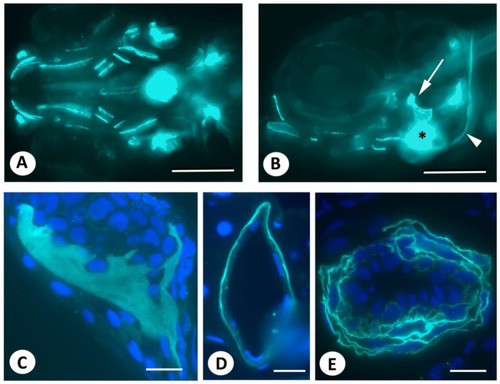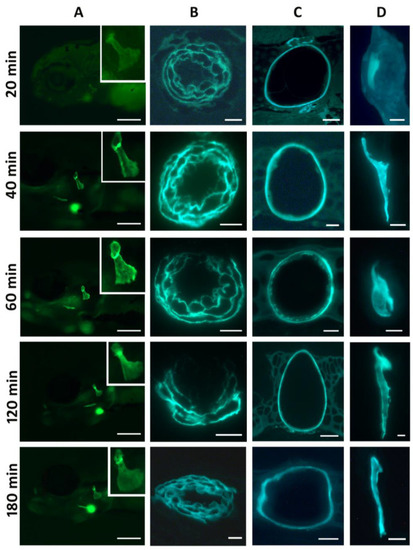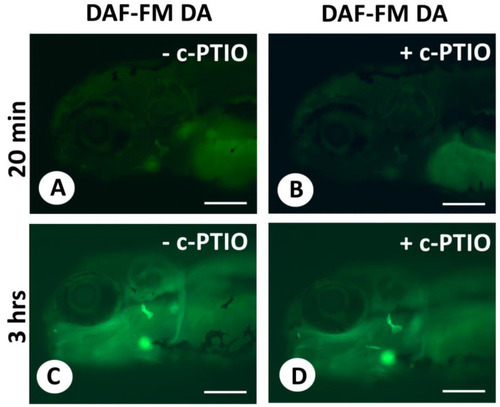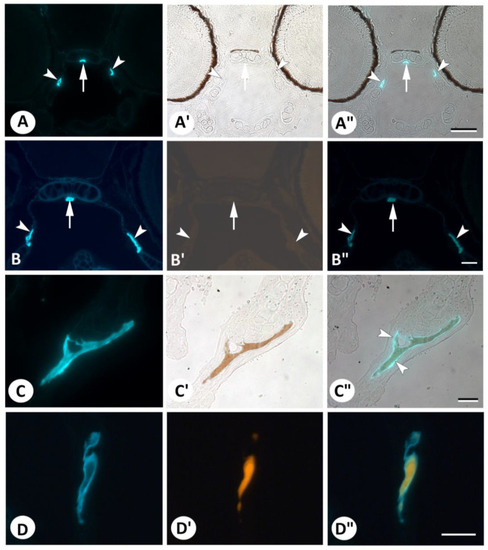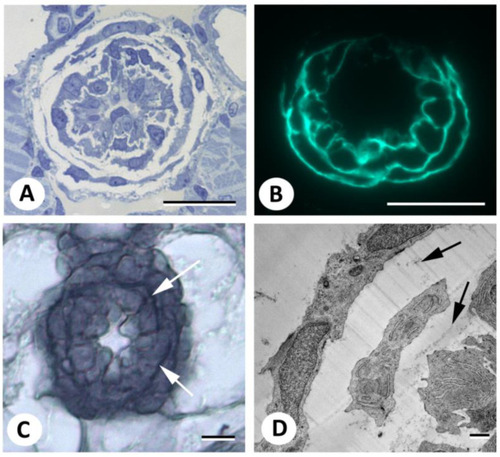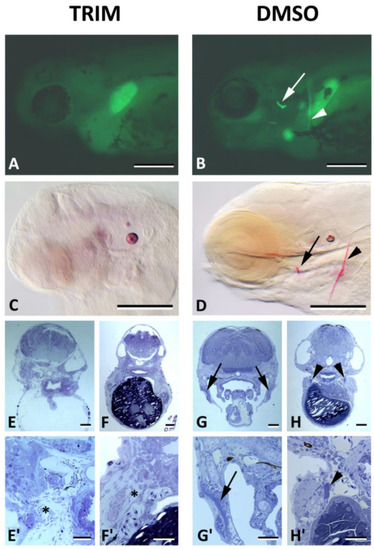- Title
-
Bone Formation in Zebrafish: The Significance of DAF-FM DA Staining for Nitric Oxide Detection
- Authors
- Huysseune, A., Larsen, U.G., Larionova, D., Matthiesen, C.L., Petersen, S.V., Muller, M., Witten, P.E.
- Source
- Full text @ Biomolecules
|
Live staining of early postembryonic zebrafish embryos with DAF-FM DA. ( |
|
Live staining of 5 dpf zebrafish embryos with DAF-FM DA for short intervals. Column ( |
|
Live staining of 5 dpf zebrafish with DAF-FM DA after the use of the NO scavenger c-PTIO. ( |
|
Comparison of DAF-FM DA-stained structures with staining for mineralized tissue. ( |
|
Demonstration of elastic fibers in the bulbus arteriosus. ( |
|
Absence of bone after inhibition of NO formation. ( |

